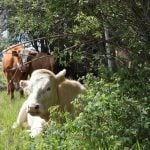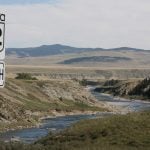BUENOS AIRES, Argentina (Reuters) — Argentina’s cattle herd has grown to 51 million head and should keep recovering from a devastating 2009 drought that, along with price controls, forced ranchers to slaughter millions of animals before their time.
Between 2007 and 2010, 17 percent of the herd was slaughtered or died of thirst and hunger. That three-year period was marked by government price controls that discouraged beef production and hot weather that peaked in 2009, turning prime grazing land into dust.
By the end of that three-year period, only 48 million head of cattle were left and soybean farming was fast encroaching on grazing lands made famous by Argentina’s iconic gauchos, or cowboys.
Read Also

Using artificial intelligence in agriculture starts with the right data
Good data is critical as the agriculture sector increasingly adopts new AI technology to drive efficiency, sustainability and trust across all levels of the value chain.
The government lifted beef price controls in 2010 as many ranchers took to feeding their cattle meal on feedlots, turning grazing pastures into more profitable soybean farms.
“Starting in 2010, thanks to higher prices, ranchers started conserving more of their cows to be used for reproduction. The inertia of the three preceding years means that stocks should keep growing,” said ranching consultant Victor Tonelli.
Between 2010 and 2013 the Argentine herd gained from three to 3.3 million head, and it could gain another 2.7 million to reach a total of 54 million by 2016, Tonelli said.
Cattle market analyst Ignacio Iriarte said that of the 10 million head of cattle that were lost between 2007 and 2011, 3.5 to four million have been recuperated.
He said the size of the herd should stabilize soon.














